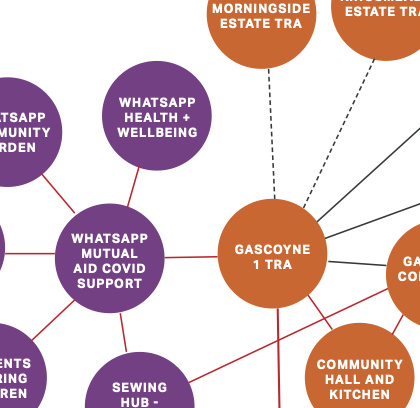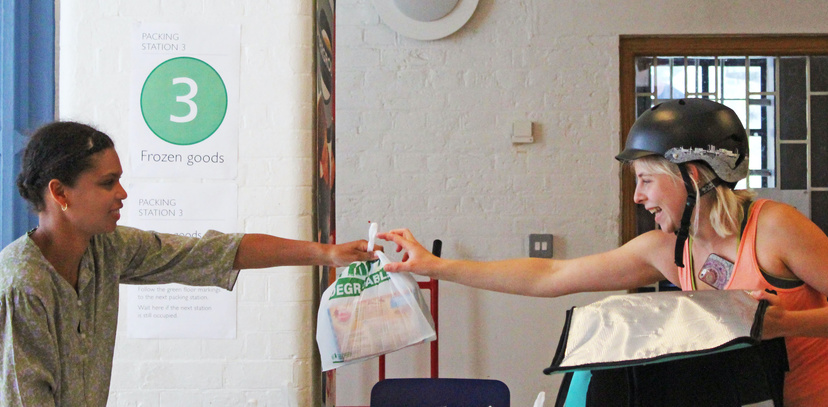

How London's local spaces, facilities and groups supported community resilience in the early months of the COVID-19 pandemic.
In May and June last year we spoke to people supporting communities in Catford, Homerton and Surbiton, from food solidarity networks to teachers, cafes and libraries. We witnessed the many ways that London’s social infrastructure was supporting communities and neighbourhoods at the height of the pandemic, and how the crisis generated extraordinary examples of resilience and innovation. We’ve described this in our report Social infrastructure in times of crisis.
We saw how the strength of the local response to the pandemic was to be found where there were strong relationships in place - between agencies and residents; among residents; and between residents, agencies and councils. These relationships allowed agencies and activists to flex and respond, building on familiarity, trust and their local insight and expertise.
Relationships offer a way in to support communities, to contact families who are scared to leave their home, or people on the shielding list who were told to stay in. They provide routes to galvanise volunteers, and for people to find new ways of doing things and to support each other.
We found rapid innovation. A barber in Catford set up a food bank; a powerful partnership emerged between sports organisations using Burgess Park in Southwark and Pembroke House - a settlement with a history stretching back to the 19th century – to create a food distribution network. We met people from different faith groups who were working together to share facilities, saw pavements used as the venue for befriending and advice, and library staff reaching out to people on the doorstep.
Often it was the smaller community based organisations that were fastest to react and who found it easiest to pivot their work. Larger organisations, including councils, tended to follow their lead, putting their weighty resources behind local efforts.
This was part of a wider piece of work for the GLA, published as Connective Social Infrastructure, a Good Growth by Design research inquiry that we carried out with Hawkins\Brown. This highlighted the importance of social infrastructure ecosystems – how places and spaces work alongside ‘soft’ and ‘informal’ supports, from WhatsApp and Facebook groups, to cafes, barbers and community networks. Our local ecosystems are specific to place and neighbourhood, and in the pandemic we saw how the strength of a local ecosystem underpins resilience and helps communities get through difficult times.
We also saw how the pandemic has put huge strain on social infrastructure, with agencies and businesses facing need and hunger, and opportunities for revenue generation slashed. Many articulated their fears for a difficult future.
Social infrastructure was at the epicentre of the city’s response to the pandemic: responding to new and urgent needs, galvanising an impressive community response, and rapidly and creatively developing new ways of working and collaborating.
As we look forward, with the sharp end of the pandemic hopefully receding, our social infrastructure will continue to play a critical role. It’s easy to take it for granted and it’s always tempting to want to build new shiny services and places, but the lessons of our work last May and June isn’t that we need new facilities. It’s that we need to value what is working well now, and build on that. We cannot afford to lose the assets that have been supporting London over this last year. We will continue to rely on them as the aftershock of the pandemic continues to shape our lives.
Photo: Pembroke House, Rachel Elizabeth photography
